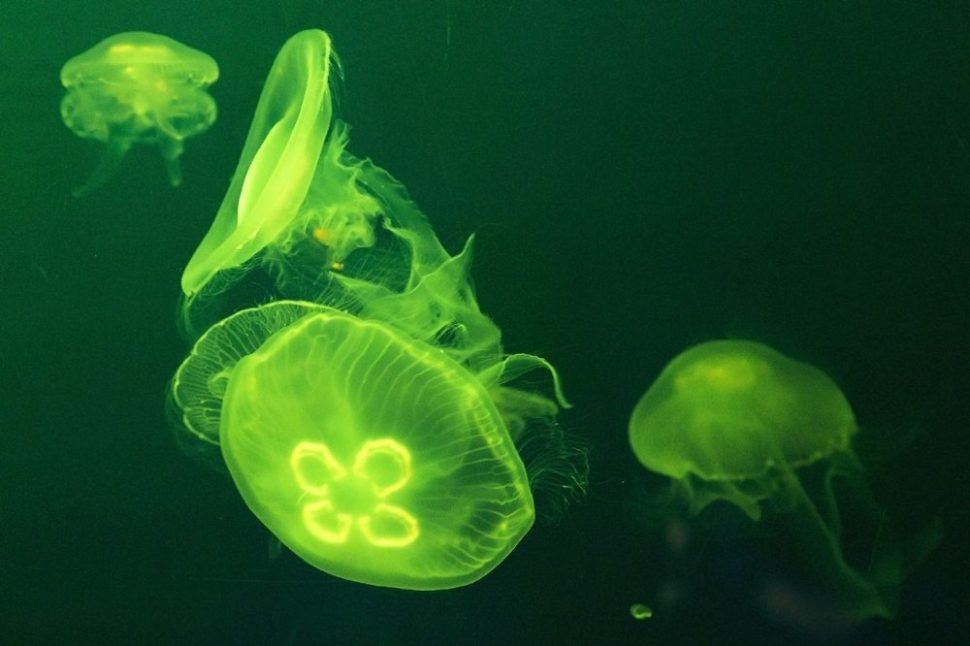As our knowledge of the natural world expands, so do our technological opportunities. Researchers from Scotland and Germany have collaborated to create a polariton laser by growing jellyfish proteins in existing E. coli cells.
The team published a paper covering their polariton laser development in the journal Science Advances.
The Polariton Laser
Most lasers rebound light within a cavity and emit photons as a concentrated beam. This process can create a large amount of heat but this type of laser is not at risk of overheating. The polariton laser, however, tosses photons back and forth between excited molecules before traveling out of the cavity. This requires a very low temperature to work properly. As a result, creating an ideal environment for the polariton laser has hindered its development.
In most cases, such low temperatures are either too costly or too impractical to sustain. Luckily, researchers have modified a polariton laser to work at room temperature.
Taking the Natural Approach
Prior research suggested that green florescent proteins from jellyfish could produce polaritons. Polaritons are quasi-particles capable of carrying excitations with them as they move.
Using E. coli cells, they grew the jellyfish proteins that, when fashioned into a 500 nanometer wide film, were set into a device with two mirrors facing one another. When a blue light was shined into the device, the proteins were excited into producing polaritons. Randomly, they synchronized, causing a laser beam to emit from the device.
While similar experiments struggled to keep the excited particles from colliding with one another, the researchers suggested that jellyfish proteins had a complementary barrel-shape which shielded the fluorescent molecules inside and protected the emitted particles from interfering with one another. This is what allowed the researchers to lower the operating temperature of the polariton laser.
A new Laser for a Precise use
According to the team, the operating temperature of the laser might make it ideal for cancer identification. In theory, it could differentiate between wavelengths of light bounced from cells allowing doctors to identify which cells are cancerous.
The team will now work to find different biological materials to use in creating the laser, which could potential mean using a different color.
The findings mark another discovery inspired by the natural world.



















Comments (0)
Most Recent